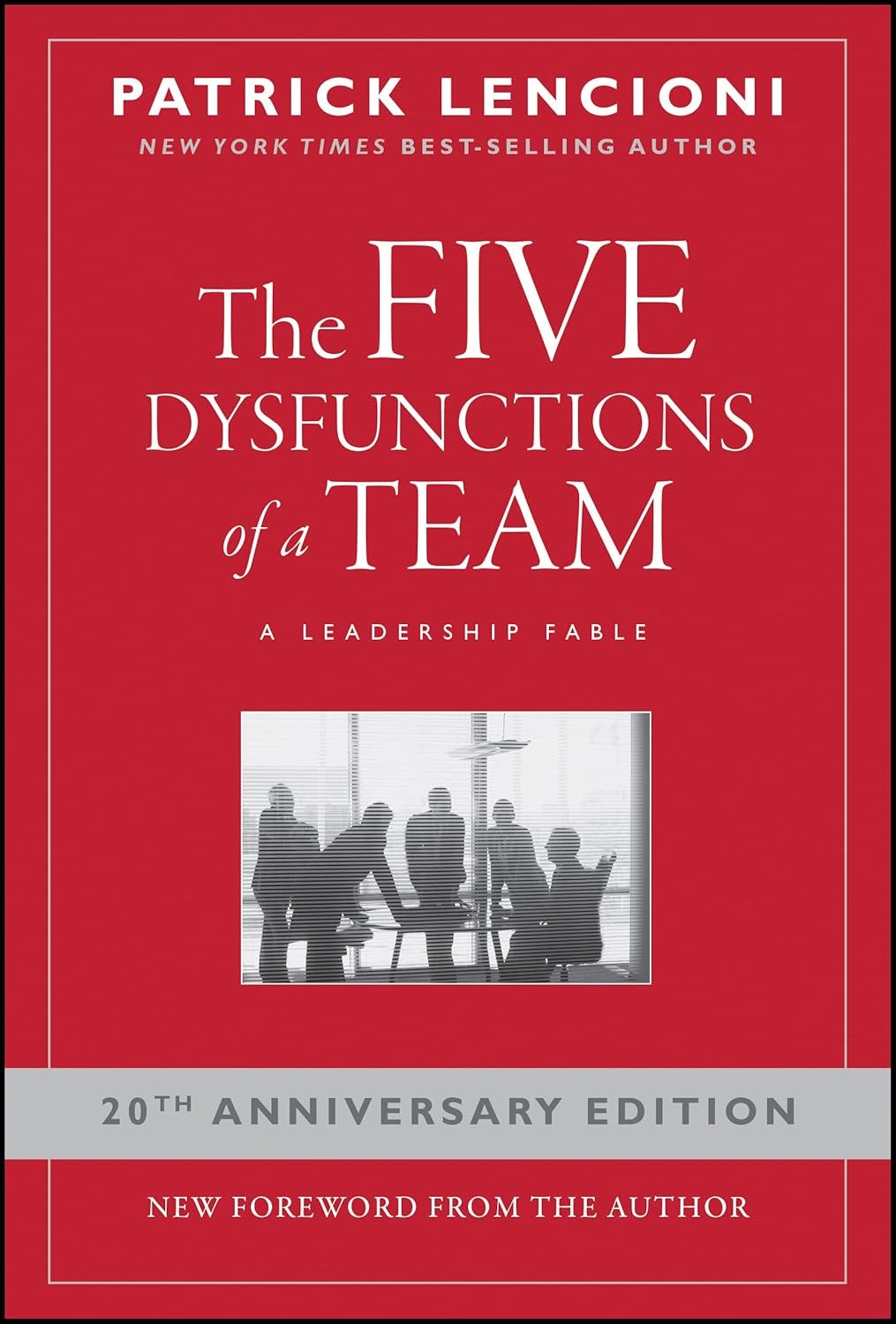Buy at https://amzn.to/4oueqHs
What It's About
Patrick Lencioni frames team dysfunction as a pyramid of interconnected problems. At the base is trust—or rather, the absence of it. When team members won’t show vulnerability, won’t admit mistakes or ask for help, everything else falls apart.
That lack of trust makes people avoid conflict. Not the toxic kind, but the productive disagreement that every good decision needs. Teams end up in fake harmony where nobody really says what they think.
Without real debate, you get weak commitment. People nod in meetings but don’t actually buy in. Then nobody holds anyone accountable because they never truly agreed to the plan in the first place. And at the top of the pyramid, the ultimate failure: team members care more about their own goals than collective results.
The book delivers this through a business fable about a CEO fixing a dysfunctional executive team at a struggling tech company. It’s a quick read—you can knock it out in a few hours—but the ideas stick with you.
Why I Recommend It
I’ve seen every one of these dysfunctions play out in real teams. The “trust” problem hit me hardest because I used to think trust meant believing your colleagues were competent. Lencioni argues it’s actually about vulnerability—being willing to admit when you’re wrong or don’t know something.
That reframing changed how I ran leadership meetings. I started admitting my own uncertainties first. “I’m not sure this architecture will scale, and I need your honest take” opened up conversations that “What do you think of my proposal?” never did. The quality of our technical debates improved within weeks.
The conflict section resonates because I’ve watched too many teams mistake politeness for professionalism. We’d leave meetings with “alignment,” then executives would quietly pursue their own agendas. The book gave me language to call out that behavior and permission to push for real disagreement in the room.
What makes this book valuable isn’t some breakthrough framework—it’s that Lencioni names dynamics every leader has experienced but struggled to articulate. The fable format makes it accessible without dumbing it down. You can hand this to a new engineering manager or a board member and they’ll both get something from it.
The limitation? It’s light on the “how.” Lencioni tells you what’s broken and why it matters, but you’ll need to figure out the specific interventions for your context. When I had an executive team that wouldn’t hold each other accountable, the book helped me diagnose the problem. Fixing it required six months of uncomfortable conversations and one firing.
But that diagnostic clarity matters. Half the battle is recognizing which dysfunction you’re actually dealing with. I’ve seen leaders try to solve commitment problems by demanding accountability, when the real issue was three levels down at trust. This book helps you see the foundation you’re missing.
If you lead a team that feels stuck—hitting deadlines but not really performing, agreeing in meetings but not executing, talented individually but weak collectively—read this. Then pick one dysfunction to address and give it three months. You’ll know pretty quickly if you’re working on the right problem.



